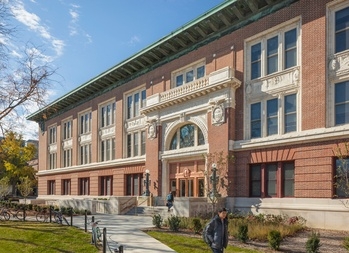Lincoln Hall before renovation was 171,121 GSF and now it is 175,848 GSF.
You are here
Lincoln Hall Renovation: LEED Platinum (Completed)
Project History
Project Family
-
LEED Certification
- Bousfield Hall: LEED Platinum
- Business Instructional Facility: LEED Platinum
- Chem Annex Renovation and Addition: LEED Gold
- Electrical and Computer Engineering Building: LEED Platinum
- Huff Hall, Khan Annex: LEED Silver
- Ikenberry Dining Hall: LEED Silver
- Illinois Fire Service Institute: LEED Silver
- Illinois Natural History Survey: LEED Silver
- Integrated Bioprocessing Research Laboratory (IBRL): LEED Silver
- Lincoln Hall Renovation: LEED Platinum
- NCSA Petascale: LEED Gold
- Natural History Building: LEED Gold
- Nugent Hall: LEED Silver
- State Farm Center: LEED Gold
- Surveying Building: LEED Gold
- Wassaja Hall: LEED Gold
- Wounded Veterans in Higher Education: LEED Gold
- Yeh Student Center: LEED Silver
Associated Collections
Project Location(s)
This map is interactive! Click (or touch) and drag to pan; scroll (or pinch) to zoom.

